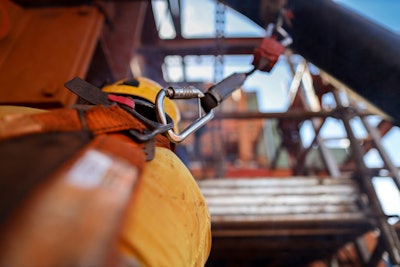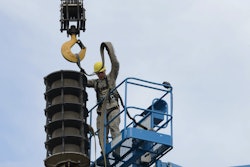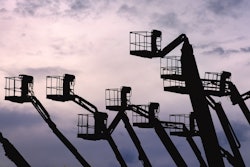
High-rise developments have become major projects of interest for the real estate and construction industries. However, this trend leaves construction workers constantly exposed to high-risk conditions. As such, work-related injuries are common, especially when workers need to engage in highly elevated areas such as scaffoldings and rooftops.
While many types of accidents can occur on construction sites, falls are the leading cause of death, according to the Occupational Safety and Health Administration (OSHA). Further, the United States Bureau of Labor Statistics (BLS) indicated that in 2020, the construction industry recorded 1,008 deaths, with falls accounting for 34% of the total deaths. For non-fatal injuries in 2019, 25,460 cases were due to falls, trips and slips – comprising 32% of 79,660 cases.
While these statistics are alarming, the brighter side is that you can prevent falls on construction sites as long as you proactively strengthen fall prevention programs and strategies. That is for the obvious and most important reason of saving lives.
Consider the economic costs of construction injuries in terms of production losses, healthcare costs, loss of income opportunities for families due to disabilities or deaths, compensation claims and lawsuits and penalties imposed on companies for violating safety codes.
Having fall prevention programs in place and adequately implementing them can benefit all stakeholders, considering the abovementioned costs. OSHA estimates that companies can save anywhere from $4-6 for every $1 invested in safety programs.
Fall Prevention and Fall Protection
Fall prevention describes the systems put in place by the construction industry to avert incidents of workers falling while on the job. These usually include equipment such as guard rails and scaffoldings, as well as process controls such as the training of workers.
Fall protection, on the other hand, is the control implemented to cushion the impact of falls if they happen. Construction companies must equip workers with personal protective equipment (PPE) or personal fall arrest systems such as hard hats and harnesses. OSHA requires fall protection equipment for workers doing their job from 6 feet above the ground and on excavation sites with a depth of 6 feet.
Why Falls Happen on Jobsites
To come up with a good fall prevention plan, it is best to be aware first of these common causes of falls on construction sites:>
- Faulty or deficient fall protection
Includes substandard or worn-out harnesses or malfunctioning parts such as hooks or buckles, improperly constructed guardrails or scaffoldings and poorly-rigged safety nets. The absence of a personal fall alert system also falls under this category.
- Roofs undergoing construction
Falls usually occur from the roof's unguarded edges and unfinished parts. Another common cause is miscalculations on the part of workers or the person directing the work.
- Accidents due to aerial lifts
Most accidents involving aerial lifts are due to the unstable position of the lift, causing it to tilt or sway and accidentally throwing off the worker.
- Use of unsafe ladders
Ladders that do not meet safety standards or those that do not undergo regular inspections can cause falls, resulting in injuries.
- Slips and trips due to hazards
Clutter and debris in high work areas pose risks of falls when workers step on objects that can cause them to lose their footing or balance.
How to Prevent Falls
By identifying the common causes of falls on construction sites, preventing accidents can be easier. After all, these are not inevitable accidents. Here are ways to prevent falls from happening on the jobsite.
1. Conduct regular risk assessments
Daily walk-throughs are part of construction best practices. Safety officers or other employees can assess potential workplace hazards and address them.
A checklist for inspection should be available, describing the conditions of guardrails, scaffoldings and ladders, and personal fall arrest systems, among others. It should also be the responsibility of employees to inspect their fall protection equipment every time they use it. These routine assessments can help in identifying and mitigating these risks before they lead to accidents.
2. Provide the right equipment that meets safety standards
The responsibility of providing fall protection for your employees, specifically those who work in what are classified as high-risk areas, falls on your shoulders. At the same time, you must not burden workers with paying for their PPE. Roof workers need personal fall arrest systems, such as good-quality harnesses with properly installed anchorage. Harnesses should also properly fit the weight and build of workers using them. All other equipment should comply with safety requirements—ladders, scaffolds, safety gears, and the like. Ladders and scaffolds should properly stand on flat grounds for stability. Installing barriers in hazardous areas is also vital in preventing accidents. Floor holes where workers might fall should have proper markings, covers or other protective devices.
3. Choose qualified employees for the job
Construction workers have specific skill sets. While construction managers have timetables for project completion, it is not wise to assign someone to do another one’s job because of absences or lack of workers. Those assigned to work at heights should be competent to handle the job.
If workers perform tasks for which they do not have the expertise or which they have little experience, accidents may happen.
4. Conduct regular training for workers
Workers need to be constantly aware of safety measures on the construction site. These are some of the important areas you could include in your training programs:
- The importance of fall prevention.
- How to use or operate fall protection and other equipment like ladders and scaffolds.
- How to identify defective fall protection equipment.
- Fixed ladder safety precautions for personnel using this kind of ladder.
- Techniques like the three-point contact, which is the use of three limbs to mount or dismount from ladders or platforms.
- The use of a buddy system, especially for roof workers.
- First-aid training of selected personnel.
- Implementing an emergency response system.
Follow-through training programs should then assess workers’ needs, as well as job performance. Workers should also suggest further training programs to correct deficiencies that may expose them or their co-workers to danger.
5. Maintain a clean and orderly jobsite
Cleaning the jobsites should be part of the daily routine, including removing debris or hazards that cause falls, slips, and trips. Remove piles of dirt and materials that obstruct passageways. Instead, store these materials in areas where there is no busy workflow like an open yard. Floor areas must stay dry and not slippery. Machinery should undergo regular maintenance to ensure its proper functioning and efficiency.
6. Add motivational programs to encourage safety compliance
Identify simple ways to motivate employees to comply with safety standards. For instance, recognition and incentives can be given for a no-injury month. This way, workers are aware that the company values their safety.
OSHA has put the steps to prevent falls in three simple words—plan, provide, train. Plan how to perform the job. Provide proper equipment. Train workers on the use of the equipment and safety measures.
Keeping Employees Safe at Work
The safety of employees in the construction industry should be the top-most priority, as the productivity of these employees can positively affect the completion of projects. Companies’ goals should be to attain zero casualties on injuries and deaths in construction sites—a goal that can only be possible if the proper measures to prevent falls are always in place.




















